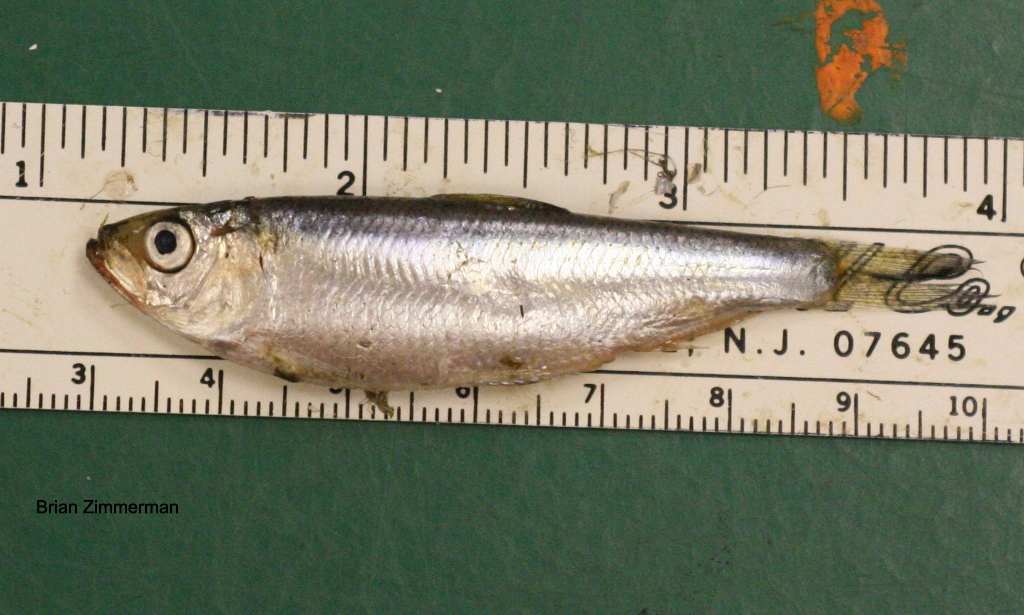Alewife
(Alosa pseudoharengus)

The alewife moved into Ohio sometime after the construction of the Welland Canal in 1829 but was not recorded in Lake Erie until 1931. Since then this non-native herring has increased in numbers but is much less abundant in Lake Erie than the rest of the upper Great Lakes where it has become incredibly abundant.
Description
The alewife is a silvery fish with a moderately deep body that is laterally compressed (nearly flat when lying on their side). They have a moderately large terminal (ending at tip of snout) mouth that extends below the eye to just beyond the front edge but not to the center of the eye. The dorsal fin is positioned directly above the pelvic fins and they, like other Alosa sp., lack the greatly extended last dorsal ray of the Dorosoma sp. of shads. Their belly comes to a point with a single row of scales folded over the edge. This gives their belly a sharp saw like edge. The alewife is very bright silver in color with a darker back. They have some black pigment on the tip of the lower jaw and can have 1-9 dusky or black spots along the upper sides with the most visible one being directly behind the gill opening. The Alewife differs from the closely related Skipjack Herring by being deeper bodied and having a smaller mouth. Additionally the alewife is primarily found in Lake Erie while skipjack herring are only found in the Ohio River basin.
Habitat and Habits
The Alewife is found in the open waters of Lake Erie and the lower portion of some of its larger tributaries. They were not found in Ohio historically. After the construction of the Welland Canal in 1829, which created a passage around Niagara Falls for ships and fish alike, they could have been present in Lake Erie. However, none were found in Ohio waters of Lake Erie or its tributaries until 1931. Since then this non-native herring has increased in numbers but is much less abundant in Lake Erie than the rest of the upper Great Lakes where it has become incredibly abundant. The Alewife has also been introduced into reservoirs in the Ohio River basin outside Ohio and occasional individuals are found in the Ohio River. This species has recently been found in Pymatuning Lake on the Ohio Pennsylvania line as well.
Reproduction and Care of the Young
The Alewife spawns in April and May in the shallow waters of Lake Erie and in some of its major tributaries. They scatter their eggs over a sand or gravel substrate and provide no parental care..